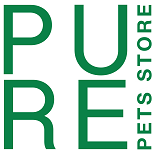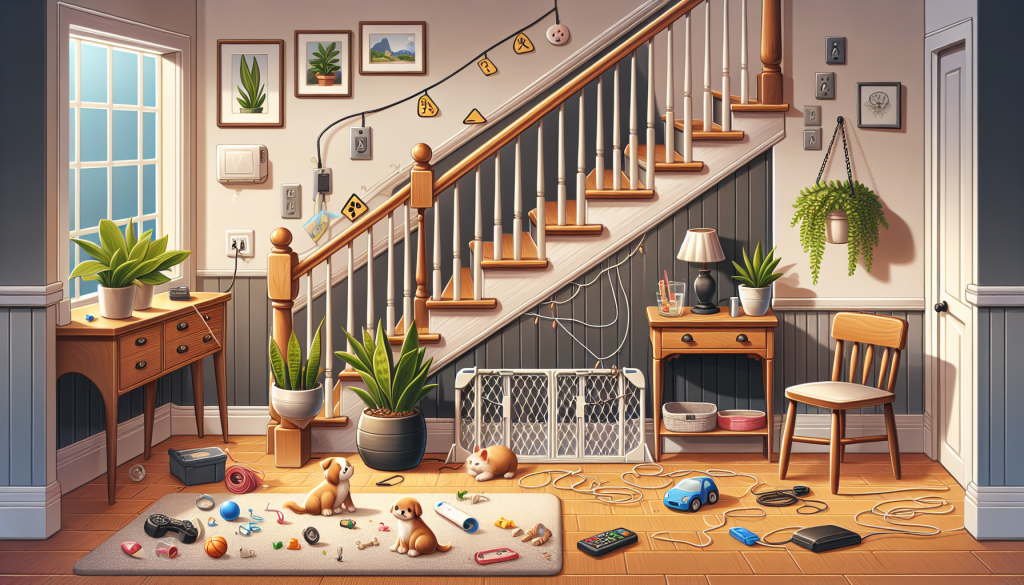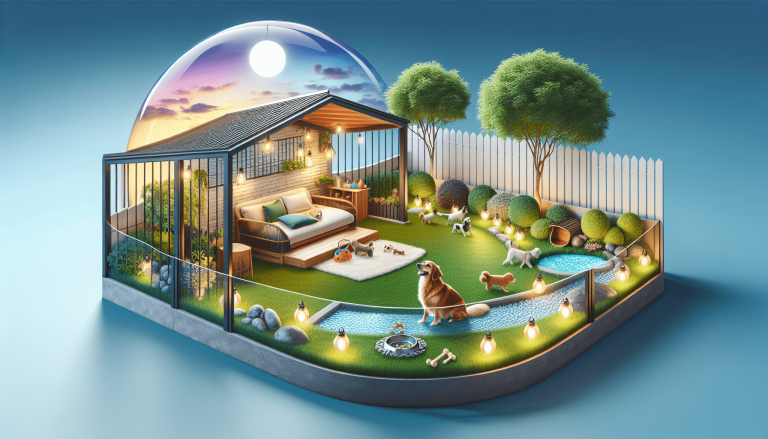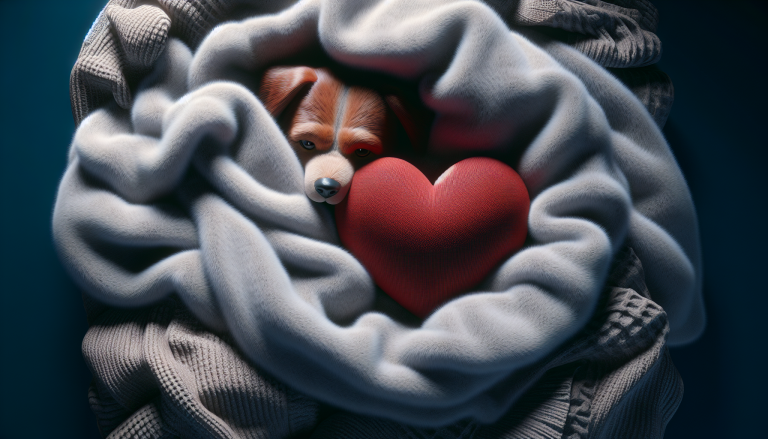If you have a furry friend at home, keeping them safe is probably one of your top priorities. But did you know that some common household items can pose a threat to their well-being? From toxic plants to hazardous chemicals, there are many potential dangers lurking in your home. In this article, we will explore some simple yet effective ways to keep your pet safe from these common household hazards. So, grab a cup of tea, sit back, and let’s ensure the safety of your beloved pet together!
Table of Contents
ToggleSecuring Your Home
Pet-Proofing Your Living Space
When it comes to creating a safe environment for your pet, one of the first steps is to pet-proof your living space. This means taking measures to ensure that your home is free of any potential hazards that could harm your furry friend. Some common pet-proofing techniques include securing loose cables and wires, covering electrical outlets, and removing any small objects that could be swallowed. By taking these simple steps, you can greatly reduce the risk of accidents and keep your pet safe.
Eliminating Toxic Plants from Your Home
Many common houseplants can be toxic to pets if ingested. It is important to take the time to research the plants in your home and determine if they pose a danger to your pet. Some common toxic plants include lilies, aloe vera, and poinsettias. If you have any toxic plants in your home, it is best to either place them out of your pet’s reach or consider removing them altogether. By doing so, you can prevent any potential poisoning incidents and ensure the safety of your furry friend.
Safely Storing Cleaning Products
Cleaning products can pose a significant danger to your pet if they are ingested or come into contact with their skin. To prevent any accidents, it is essential to safely store your cleaning products. This means keeping them in locked cabinets or high shelves that are out of your pet’s reach. Additionally, when using cleaning products, it is crucial to keep your pet in a separate area to avoid any accidental exposure. By taking these precautions, you can maintain a clean home while keeping your pet safe.
Securely Closing Cabinets and Drawers
Cabinets and drawers can be a source of potential danger for your pet. They may contain toxic substances, sharp objects, or even small items that could be swallowed. To prevent any accidents, it is important to ensure that all cabinets and drawers are securely closed at all times. Consider using childproof locks or latches to prevent your pet from accessing these areas. By doing so, you can create a safe environment for your pet and have peace of mind knowing that they are protected from any potential hazards.
Keeping Dangerous Foods Out of Reach
Certain foods can be toxic to pets if ingested. It is crucial to be aware of the foods that can be harmful and ensure they are kept out of your pet’s reach. Some common dangerous foods for pets include chocolate, onions, grapes, and alcohol. Make sure to store these foods securely and dispose of any leftovers properly. Additionally, be mindful of where you place your garbage bins, as they can contain food scraps that may be tempting for your pet. By being proactive and vigilant about food safety, you can prevent any accidental ingestion and keep your pet healthy and safe.
Creating a Safe Environment
Providing a Cozy and Safe Sleeping Area
Just like humans, pets need a comfortable and safe place to sleep. Ensure that your pet has a designated sleeping area that is free from any potential hazards. This means keeping their bed or crate in an area where they won’t be at risk of knocking things over or being stepped on. Make sure that their bedding is clean and free from any loose threads or materials that could be ingested. By providing a cozy and safe sleeping area, you can ensure that your pet gets the rest they need in a secure environment.
Choosing Pet-Friendly Furniture
When selecting furniture for your home, it is important to consider the safety and comfort of your pet. Avoid furniture with sharp edges or exposed nails that could potentially harm your pet. Opt for materials that are easy to clean and resistant to pet hair and stains. It is also a good idea to choose furniture that is sturdy and stable, as this will prevent any accidents or injuries if your pet jumps on or off it. By choosing pet-friendly furniture, you can create a comfortable and safe environment for your furry friend.
Using Pet-Safe Pest Control Methods
Pests can be a nuisance, but it is important to use pet-safe methods when trying to eliminate them from your home. Many traditional pest control methods contain harmful chemicals that can be toxic to pets if ingested or inhaled. Instead, opt for pet-friendly alternatives such as natural repellents or traps. Make sure to read the labels of any pest control products to ensure they are safe for pets. By using pet-safe pest control methods, you can effectively eliminate pests while keeping your pet’s health and safety a top priority.
Avoiding Dangerous Decorations
Decorations can add a festive touch to your home, but some can pose a danger to pets. Keep in mind that decorations such as tinsel, ornaments, and ribbons can be swallowed by curious pets and cause intestinal blockages. Additionally, be cautious when using candles or decorative lights, as pets may chew on electrical cords and risk electrocution or burns. As a pet owner, it is important to choose pet-safe decorations and keep them out of your pet’s reach. By being mindful of the decorations you choose, you can ensure a safe and enjoyable environment for your pet.
Keeping Cords and Wires Tucked Away
Electrical cords and wires can be a temptation for pets to chew on, leading to potential electrical shocks or even strangulation. To prevent accidents, make sure to secure or hide any loose cords and wires. There are various cord protectors and concealers available that can help keep cords out of your pet’s reach. Additionally, consider rearranging furniture or using cord covers to keep cords hidden and inaccessible. By taking these precautions, you can minimize the risk of your pet getting tangled in cords or being harmed by electrical hazards.
Maintaining a Clean and Pet-Safe Home
Using Pet-Friendly Cleaning Products
When it comes to cleaning your home, it is important to choose products that are safe for your pet. Many traditional cleaning products contain chemicals that can be toxic if ingested or come into contact with your pet’s skin. Look for pet-friendly cleaning products that are labeled as non-toxic and safe for pets. Additionally, consider using natural cleaning solutions such as vinegar and baking soda, which are safe alternatives to harsh chemicals. By using pet-friendly cleaning products, you can maintain a clean and healthy home without putting your pet at risk.
Properly Disposing of Harmful Waste
Proper waste disposal is crucial for maintaining a pet-safe home. Dispose of pet waste in designated areas, away from any areas where your pet could have access to it. Also, make sure to securely dispose of any hazardous materials, such as batteries or household chemicals, in a way that prevents your pet from accidentally ingesting them. Always check the labels of any waste or hazardous materials for proper disposal instructions. By practicing responsible waste management, you can keep your home clean and safe for your pet.
Preventing Accidental Poisoning
Accidental poisoning is a common household hazard for pets. Many everyday items, such as medications, cleaning products, and certain foods, can be toxic to pets if ingested. Make sure to always store these items in locked cabinets or secure areas that are inaccessible to your pet. Avoid leaving any medication or harmful materials on countertops or tables where your pet could reach them. Additionally, be cautious about exposing your pet to second-hand smoke or harmful fumes from cleaning products. By being proactive and vigilant, you can prevent accidental poisoning and keep your pet safe.
Regularly Cleaning and Disinfecting
Maintaining a clean and hygienic environment is essential for your pet’s health and well-being. Regularly clean and disinfect areas that your pet frequently uses, such as their bedding, food bowls, and litter boxes. Use pet-friendly cleaning products that are effective in removing dirt and bacteria but safe for your pet. Pay special attention to areas that can harbor bacteria, such as floors, countertops, and furniture. By establishing a routine cleaning schedule, you can keep your home clean and reduce the risk of your pet getting sick from germs or bacteria.
Removing Hazardous Objects from Floors
Pets have a tendency to explore their surroundings with their mouths, which can put them at risk of swallowing small objects. Keep the floors of your home free from any hazardous objects that could be easily swallowed or pose a choking hazard. This includes small toys, coins, jewelry, or any other small items that could be within your pet’s reach. Regularly inspect your home for any potential hazards and keep floors tidy and clutter-free. By removing hazardous objects from floors, you can create a safe environment for your pet and prevent any accidents.
Preventing Accidents in the Kitchen
Securing Trash Bins and Recyclables
The kitchen can be a source of temptation for pets, especially when it comes to the trash bin. Make sure to use trash bins with secure lids or place them in cabinets with childproof locks to prevent your pet from digging through the garbage. Additionally, keep recyclables in closed containers and dispose of them properly. This will help prevent your pet from accessing potentially harmful materials or ingesting spoiled food. By securing trash bins and recycling containers, you can minimize the risk of your pet getting into something they shouldn’t and maintain a clean and safe kitchen environment.
Keeping Countertops and Surfaces Clean
Countertops and surfaces in the kitchen often come into contact with food and cooking ingredients, some of which can be toxic to pets. It is important to keep countertops and surfaces clean and free from any potential hazards. Wipe down surfaces after preparing food and ensure that no leftover scraps or spills are left behind. Be cautious about leaving any items on countertops that your pet could reach, such as unwrapped food or ingredients. By maintaining clean countertops and surfaces, you can reduce the risk of your pet ingesting harmful substances and promote a safe kitchen environment.
Storing Food Properly
Properly storing food is essential for preventing your pet from accessing potentially harmful ingredients. Keep all food items securely stored in sealed containers or in cabinets that are out of your pet’s reach. Be mindful of any foods that are toxic to pets, such as chocolate, onions, or grapes, and ensure that they are stored securely. Additionally, avoid leaving food unattended on countertops or tables and dispose of leftovers properly. By taking these precautions, you can prevent your pet from ingesting harmful foods and maintain a safe and healthy kitchen environment.
Using Caution with Hot Appliances
Hot appliances in the kitchen can pose a burn or fire hazard to your pet. Always use caution when operating appliances such as stovetops, ovens, and microwaves. Never leave these appliances unattended when they are in use. Keep stove knobs covered or locked to prevent accidental ignition by playful paws. Make sure to cool down any hot appliances before allowing your pet near them. By being mindful of hot appliances and taking the necessary precautions, you can reduce the risk of burns or fire accidents and ensure a safe kitchen environment for your pet.
Being Mindful of Open Flames
Candles, gas stoves, and fireplaces can create a cozy atmosphere in the kitchen, but they also pose a significant fire hazard for pets. Never leave candles or flames unattended when you have pets in the household. Use caution when lighting gas stoves or fireplaces and make sure to have a secure barrier in place to prevent your pet from getting too close. Consider using flameless candles or alternative methods to create a similar ambiance without the risk of fire. By being mindful of open flames, you can prevent any accidents or injuries and keep your pet safe in the kitchen.
Ensuring Bathroom Safety
Storing Medications and Personal Care Products Securely
Medications and personal care products are commonly found in the bathroom, and they can be harmful to pets if ingested. Make sure to keep all medications and personal care products securely stored in cabinets that are out of your pet’s reach. Use childproof locks or latches to prevent your pet from accessing these areas. This applies not only to prescription medications but also to over-the-counter drugs, such as pain relievers or vitamins. By storing medications and personal care products securely, you can prevent any accidental ingestion and ensure the safety of your pet.
Securing Toilet Seat and Bathroom Trash
Toilets and bathroom trash bins can both pose a hazard to pets. Make sure to keep the toilet seat closed to prevent your pet from drinking or falling into the toilet bowl. Consider using a toilet lock or a heavy lid to ensure that your pet cannot access the water or potentially harmful cleaning agents. Additionally, keep the bathroom trash bin securely covered or placed in a cabinet. This will prevent your pet from rummaging through the trash and potentially ingesting something harmful. By securing the toilet seat and bathroom trash bins, you can keep your pet safe in the bathroom.
Ensuring a Hazard-Free Bathing Experience
Bathing your pet is an essential part of their grooming routine, but it can also present some hazards. Prioritize your pet’s safety by ensuring a hazard-free bathing experience. Make sure to use lukewarm water that is comfortable for your pet’s skin and avoid water that is too hot or cold. Use pet-friendly shampoos and conditioners that are safe for your pet’s skin and coat. Avoid using strong fragrances or harsh chemicals that could irritate their skin or be harmful if ingested. By taking these precautions, you can provide a safe and enjoyable bathing experience for your pet.
Using Pet-Friendly Cleaning Products
The bathroom is an area that requires regular cleaning, but it is important to use pet-friendly cleaning products. Many bathroom cleaning products contain harsh chemicals that can be harmful to pets if inhaled or ingested. Look for pet-safe alternatives that are non-toxic and gentle on your pet’s paws. Natural cleaning agents such as vinegar and baking soda can effectively clean bathroom surfaces without posing a risk to your pet’s health. By using pet-friendly cleaning products, you can maintain a clean and hygienic bathroom while keeping your pet safe.
Keeping Toilet Bowl Clean and Closed
An open toilet bowl can present a drowning hazard to pets, especially small ones. Make sure to keep the lid of the toilet bowl closed at all times to prevent your pet from falling in or drinking from it. Additionally, regularly clean and disinfect the toilet bowl to eliminate any bacteria or harmful chemicals that could pose a risk to your pet. By keeping the toilet bowl clean and closed, you can ensure a safe bathroom environment and minimize the risk of any accidents or injuries.
Safe Outdoor Considerations
Securing Fencing and Barriers
Creating a secure outdoor space is crucial for keeping your pet safe. Make sure that your fencing is secure and free from any gaps or loose boards that your pet could escape through. Regularly inspect the fencing for any damage and promptly repair or replace any areas that pose a risk. Additionally, consider using barriers to prevent your pet from accessing potentially dangerous areas, such as pools, ponds, or busy roads. By securing fencing and using barriers, you can provide a safe outdoor environment for your pet to enjoy.
Avoiding Harmful Substances in the Yard
Your yard may contain various substances that can be harmful to your pet. Avoid using fertilizers, pesticides, or herbicides that contain toxic chemicals. These substances can be ingested through licking paws or directly ingesting grass or plants. Opt for pet-safe alternatives or natural methods of lawn care. Be cautious of any plants or flowers in your yard that may be toxic to pets and remove them if necessary. By avoiding harmful substances in your yard, you can create a safe outdoor space for your pet to play and explore.
Protecting Your Pet from Extreme Weather
Extreme weather conditions can pose a danger to pets if they are not adequately protected. In hot weather, provide shade and fresh water for your pet to cool down and avoid heatstroke. Avoid leaving them in a hot car and limit their outdoor activities during the hottest parts of the day. In cold weather, make sure your pet has a warm and dry shelter to seek refuge from the harsh elements. Consider using pet-safe heated beds or blankets to provide extra warmth. By protecting your pet from extreme weather conditions, you can ensure their well-being and prevent any weather-related illnesses or injuries.
Being Aware of Poisonous Plants
Your yard or garden may contain plants that are toxic to pets if ingested. Familiarize yourself with the types of plants that are hazardous and ensure they are removed or placed out of your pet’s reach. Some common poisonous plants for pets include lilies, tulips, and azaleas. Consider planting pet-friendly alternatives or creating a designated pet area that is free from toxic plants. By being aware of poisonous plants and taking the necessary precautions, you can prevent any accidental ingestion and keep your pet safe while enjoying the outdoor space.
Using Pet-Safe Lawn Care Products
Maintaining a lush and healthy lawn is important, but it is equally important to use pet-safe lawn care products. Many traditional lawn care products contain harmful chemicals that can be toxic to pets if ingested or inhaled. Opt for pet-friendly alternatives that are labeled as safe for pets. Consider using organic fertilizers and natural pest control methods. Always follow the instructions on the product labels and keep your pet off the treated areas until they are safe for them to access. By using pet-safe lawn care products, you can maintain a beautiful lawn while prioritizing the health and safety of your pet.
Avoiding Electrical Hazards
Covering Electrical Outlets
Electrical outlets can pose a serious hazard to pets, especially curious puppies or kittens. Make sure to cover all unused electrical outlets with safety covers or outlet protectors. These affordable devices can prevent your pet from sticking their paws or nose into the outlets and risk electrical shocks. Additionally, keep cords plugged into outlets hidden or out of your pet’s reach to prevent them from chewing on them. By covering electrical outlets, you can minimize the risk of electrical accidents and keep your pet safe.
Keeping Cords and Wires Out of Reach
Cords and wires can be tempting chew toys for pets, but they can also pose a significant risk of electrical shock or injury. Keep cords and wires out of your pet’s reach by using cord organizers, cable sleeves, or hiding them behind furniture. Secure loose cords against the wall or under carpets using cord clips or protectors. Also, try to limit the number of appliances or devices plugged in if they are not in use to reduce the amount of exposed cords. By keeping cords and wires out of reach, you can eliminate a potential electrical hazard and ensure your pet’s safety.
Using Cord Protectors and Concealers
Cord protectors and concealers are effective tools to keep cords and wires hidden and away from your pet’s reach. Cord protectors are usually made from durable materials such as plastic or rubber and can provide a physical barrier between your pet and the cords. Cord concealers, on the other hand, are designed to hide cords and blend them with your decor, reducing the temptation for your pet to chew on them. By using cord protectors and concealers, you can safeguard your pet from potential electrical hazards and maintain a tidy living space.
Avoiding Chewed Wires and Frayed Cables
Chewed wires and frayed cables can not only damage your electrical devices but also pose a significant danger to your pet. Regularly inspect cords and wires for any signs of damage and promptly replace them if necessary. Consider using wire covers or PVC tubing to provide an additional layer of protection and prevent your pet from accessing the wires. If you notice your pet chewing on cords, discourage this behavior by redirecting their attention to appropriate chew toys and providing plenty of mental and physical stimulation. By avoiding chewed wires and frayed cables, you can prevent potential electrical hazards and keep your pet safe.
Using Pet-Friendly Electrical Devices
When selecting electrical devices for your home, consider pet-friendly options that prioritize safety. Look for devices that have built-in safety features, such as automatic shut-off or cord retractors. Choose appliances with sturdy construction to prevent them from tipping over or being easily damaged by your pet. Additionally, opt for devices that emit a low noise level to minimize any discomfort or anxiety for your pet. By using pet-friendly electrical devices, you can enjoy modern conveniences while ensuring the safety and well-being of your furry companion.
Managing Pest Control Safely
Choosing Pet-Friendly Pest Control Products
When dealing with pests, it is important to choose pest control products that are safe for your pet. Many traditional pest control methods contain chemicals that can be toxic if ingested or come into contact with your pet’s skin. Look for pet-safe alternatives, such as natural repellents or traps, that effectively eliminate pests without posing a risk to your pet’s health. Always read and follow the instructions on the product labels to ensure their safe use. By choosing pet-friendly pest control products, you can maintain a pest-free home while keeping your pet’s safety a top priority.
Keeping Your Pet Away During Treatments
During pest control treatments, it is crucial to keep your pet away from the treated areas. The chemicals used in pest control products can be harmful if ingested or inhaled by your pet. Follow the instructions provided by the manufacturer or pest control professional and keep your pet in a separate area, such as a crate or a room that is not being treated. Ensure that your pet does not come into contact with any treated surfaces until it is safe to do so. By keeping your pet away during pest control treatments, you can prevent any accidental exposure and ensure their well-being.
Using Traps and Barriers to Control Pests
Traps and barriers can be effective alternatives to chemical pest control methods. Consider using pet-friendly traps or barriers to control pests without exposing your pet to harmful chemicals. For example, you can use sticky traps to catch insects or install pet-safe barriers to prevent pests from entering certain areas of your home. Research pet-friendly pest control techniques for specific pests, such as fleas or rodents, and implement them accordingly. By using traps and barriers, you can effectively control pests while keeping your pet’s health and safety a priority.
Avoiding Toxic Chemicals
When managing pest control, it is important to avoid using toxic chemicals that can be harmful to your pet. This includes pesticides, insecticides, or any other chemical-based products that may contain toxic ingredients. Opt for pet-safe alternatives that utilize natural or organic ingredients to eliminate pests. Regularly research and educate yourself on the potential hazards of specific chemicals before using them in your home. By avoiding toxic chemicals, you can protect your pet from potential harm and maintain a pet-friendly environment.
Regularly Cleaning and Preventing Infestations
Regular cleaning and preventive measures are key to managing pests in a pet-safe home. Clean up spilled food, sweep or vacuum regularly to remove crumbs or debris, and promptly dispose of trash. Store pet food in airtight containers to prevent attracting pests. Regularly inspect your home for signs of infestations, such as insect droppings or chewed wires, and take action immediately if a problem arises. By maintaining a clean environment and implementing preventive measures, you can minimize the risk of pest infestations and protect your pet’s health.
Handling Household Appliances
Keeping Appliances Secure and Stable
Household appliances, such as televisions, bookshelves, or refrigerators, can pose a threat to your pet if they are not properly secured and stable. Ensure that all appliances are securely anchored to the wall or floor to prevent them from tipping over if your pet accidentally bumps into them. Use brackets, straps, or wall-mounting kits to secure heavy appliances or furniture. Regularly check the stability of appliances and promptly repair any loose or damaged parts. By keeping appliances secure and stable, you can prevent any accidents or injuries caused by falling objects.
Storing Small Appliances Safely
Small appliances, such as blenders, toasters, or hair dryers, can be dangerous if your pet accidentally knocks them over or chews on exposed cords. Store these appliances in secure cabinets or high shelves that are out of your pet’s reach. If you have appliances plugged in, make sure to keep cords hidden or use cord covers to prevent your pet from chewing on them. When using small appliances, always supervise your pet and keep them away from potential hazards. By storing small appliances safely, you can minimize the risk of accidents and keep your pet out of harm’s way.
Caulking and Sealing Gaps and Holes
Gaps and holes in walls, floors, or ceilings can be potential hiding spots for pests or present safety hazards for your pet. Regularly inspect your home for any gaps or holes and promptly seal them with caulk or weatherstripping. Pay special attention to areas where electrical wiring or plumbing is exposed. By caulking and sealing gaps and holes, you can prevent pests from entering your home and create a safer environment for your pet.
Preventing Pets from Playing with Buttons and Levers
Some household appliances, such as ovens, washing machines, or dishwashers, have buttons, knobs, or levers that can be tempting for pets to play with. As a pet owner, it is important to prevent your pet from accessing these controls to avoid any potential accidents or damage to the appliances. Consider using childproof covers, locking mechanisms, or barriers to restrict access to these areas. By preventing pets from playing with buttons and levers, you can maintain the functionality of your appliances and prevent any mishaps.
Ensuring Proper Ventilation and Fire Safety
Proper ventilation is important for both the functionality of appliances and the safety of your pet. Make sure that ventilation systems for appliances such as dryers or stoves are clean and functioning properly. Remove any debris or lint buildup that can pose a fire hazard. Additionally, install smoke detectors and carbon monoxide detectors in your home to alert you of any potential dangers. Regularly test these detectors to ensure they are working correctly. By ensuring proper ventilation and fire safety measures, you can protect both your appliances and your pet from potential hazards.
Being Prepared for Emergencies
Creating a Pet First Aid Kit
In case of emergencies or accidents, it is essential to have a pet first aid kit readily available. This kit should include essential items such as gauze, adhesive tape, antiseptic solutions, tweezers, and a pet thermometer. Additionally, keep a list of emergency phone numbers for your veterinarian, local animal hospitals, or poison control centers. Familiarize yourself with basic first aid procedures for pets, such as how to handle minor injuries or choking. By creating a pet first aid kit and being prepared, you can provide immediate care and potentially save your pet’s life in an emergency situation.
Knowing the Location of Pet Hospitals and Emergency Clinics
It is important to be aware of the location of pet hospitals and emergency clinics in your area. Research and identify the nearest facilities that provide emergency veterinary care. Keep a list of their addresses, phone numbers, and hours of operation easily accessible in case of an emergency. By knowing the location of pet hospitals and emergency clinics, you can quickly seek professional help when needed and ensure that your pet receives immediate medical attention.
Keeping Emergency Contact Information Handy
In addition to the contact information for pet hospitals and emergency clinics, it is important to have your own emergency contact information readily available. Create a list that includes your name, address, phone number, and an alternate contact person in case you are not available. Keep this list in a visible place or saved on your phone so that it is easily accessible in case of an emergency. By keeping emergency contact information handy, you can ensure that help can be quickly contacted in the event of an emergency involving your pet.
Understanding Basic Pet First Aid Procedures
Basic knowledge of pet first aid procedures can be invaluable in an emergency situation. Take the time to familiarize yourself with steps to perform CPR, control bleeding, or administer basic wound care. Knowing how to recognize signs of distress or illness in your pet can help you take appropriate action. Consider taking a pet first aid and CPR course to enhance your knowledge and skills. By understanding basic pet first aid procedures, you can provide immediate care to your pet and potentially save their life in an emergency.
Preparing for Natural Disasters and Evacuation
Natural disasters can be unpredictable, and it is essential to have a plan in place to keep your pet safe during such events. Prepare an emergency kit for your pet that includes essential items such as food, water, medications, and a leash. Keep a carrier or crate easily accessible for evacuation purposes. Research pet-friendly shelter options in your area or with friends and family members who are willing to accommodate your pet during an emergency. By preparing for natural disasters and evacuation, you can ensure the safety and well-being of your pet during challenging times.
In conclusion, securing your home and creating a safe environment for your pet is crucial for their well-being. By implementing the suggested measures and being proactive in pet-proofing your living space, you can significantly reduce the risk of accidents and keep your pet safe from common household hazards. Remember to use pet-friendly cleaning products, properly store hazardous substances, secure appliances and cords, and follow safety guidelines in every area of your home. With these precautions in place, you can enjoy the company of your pet knowing that their safety and comfort are top priorities.








